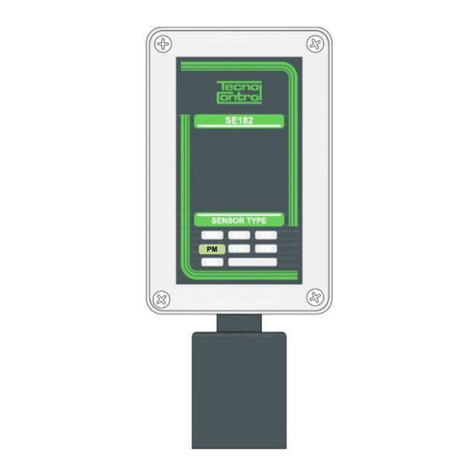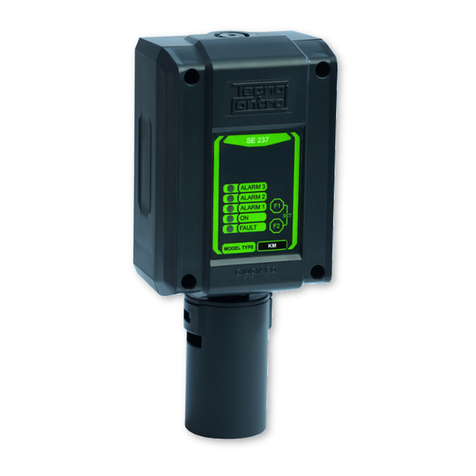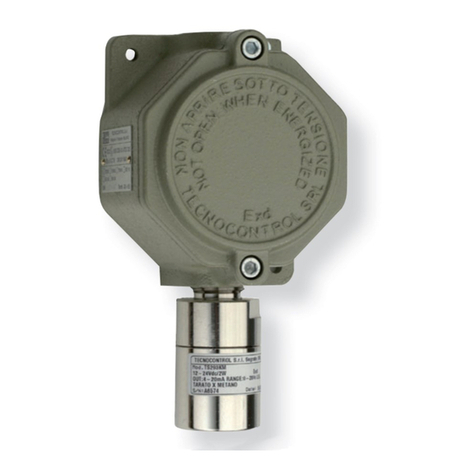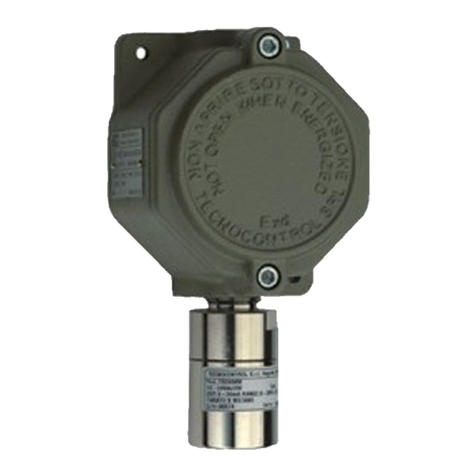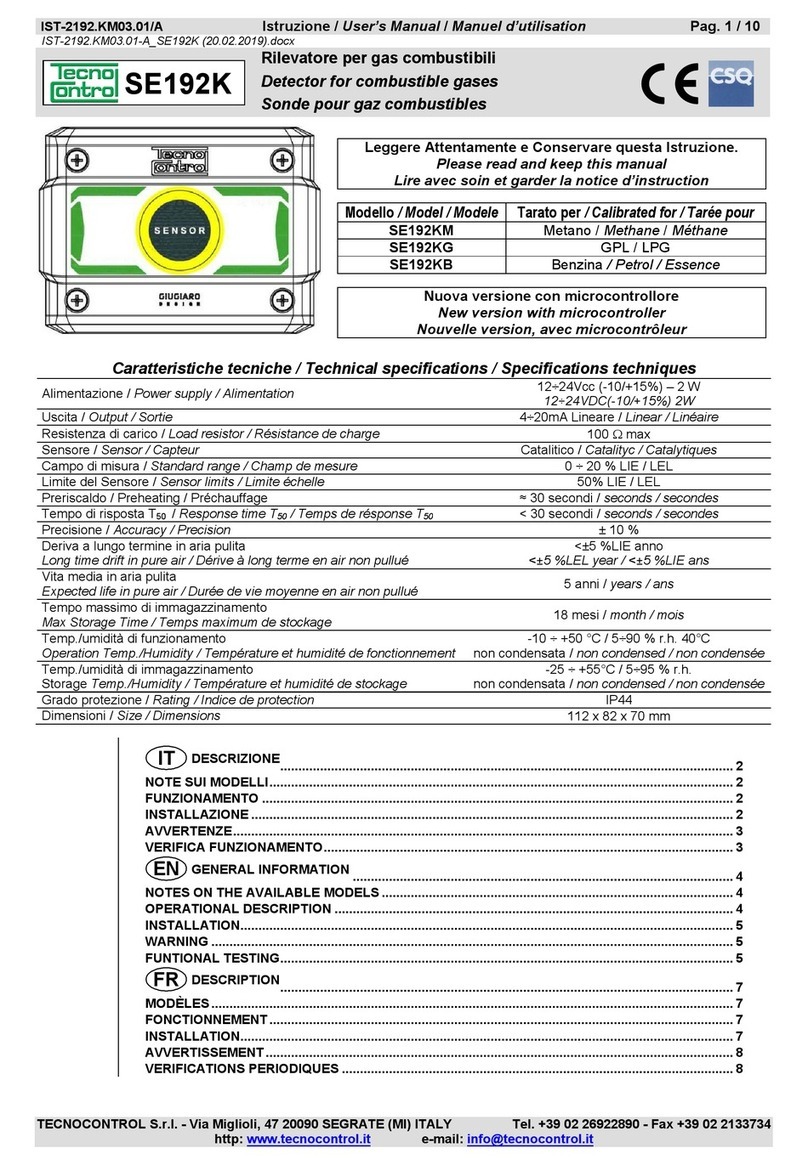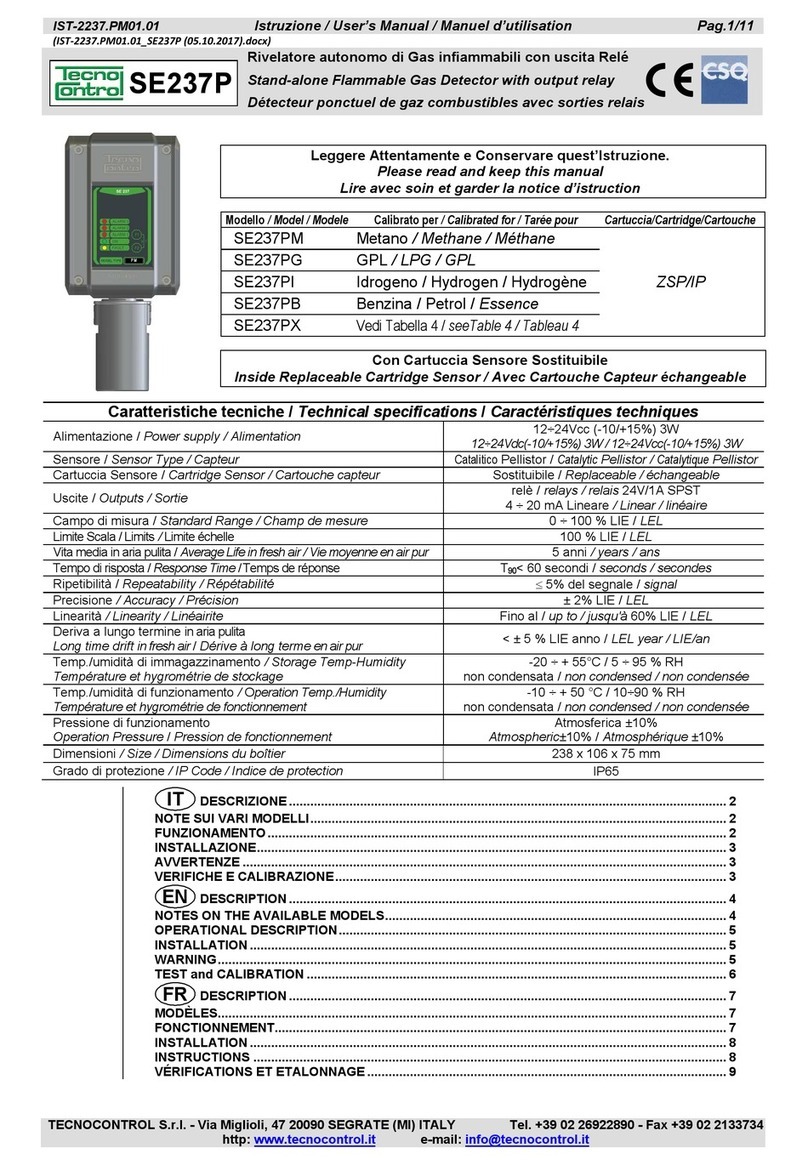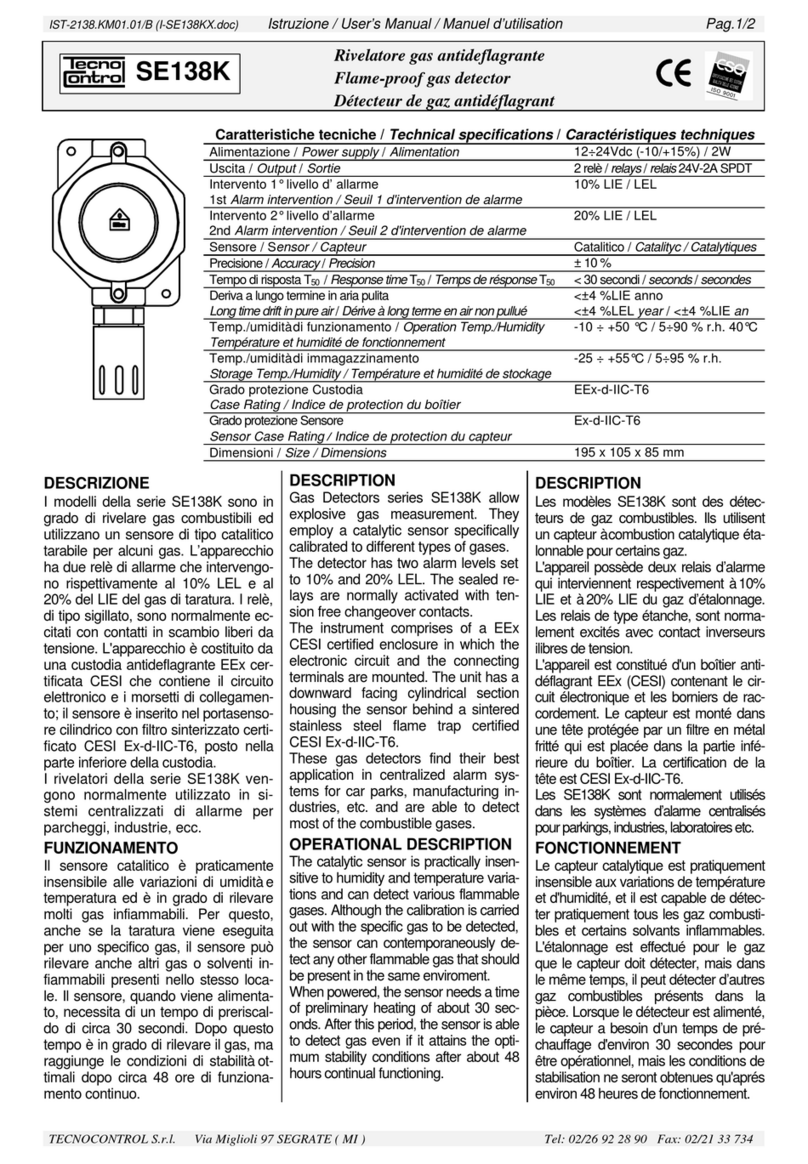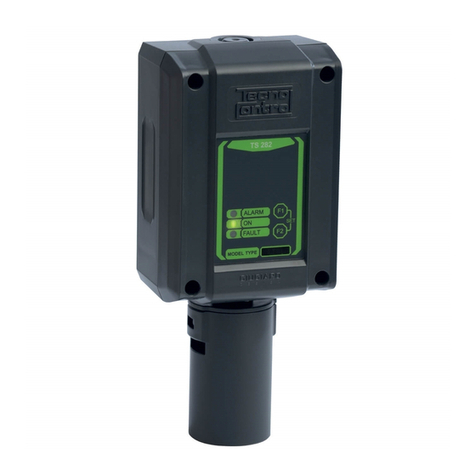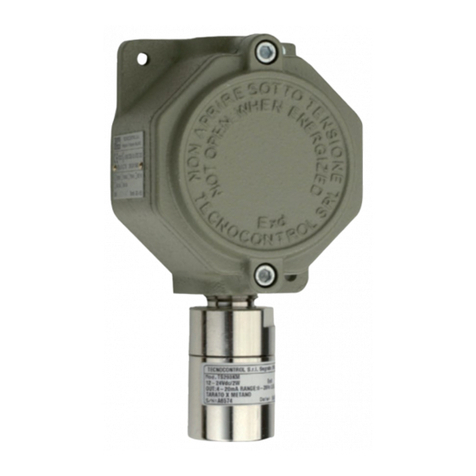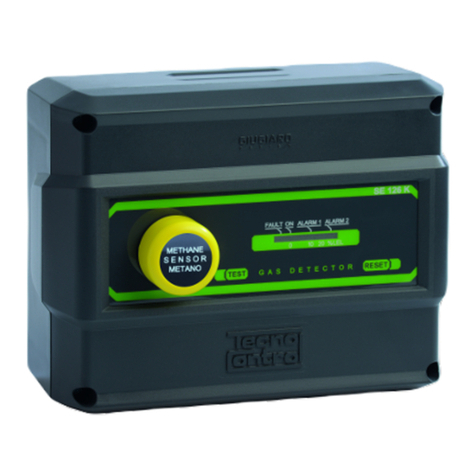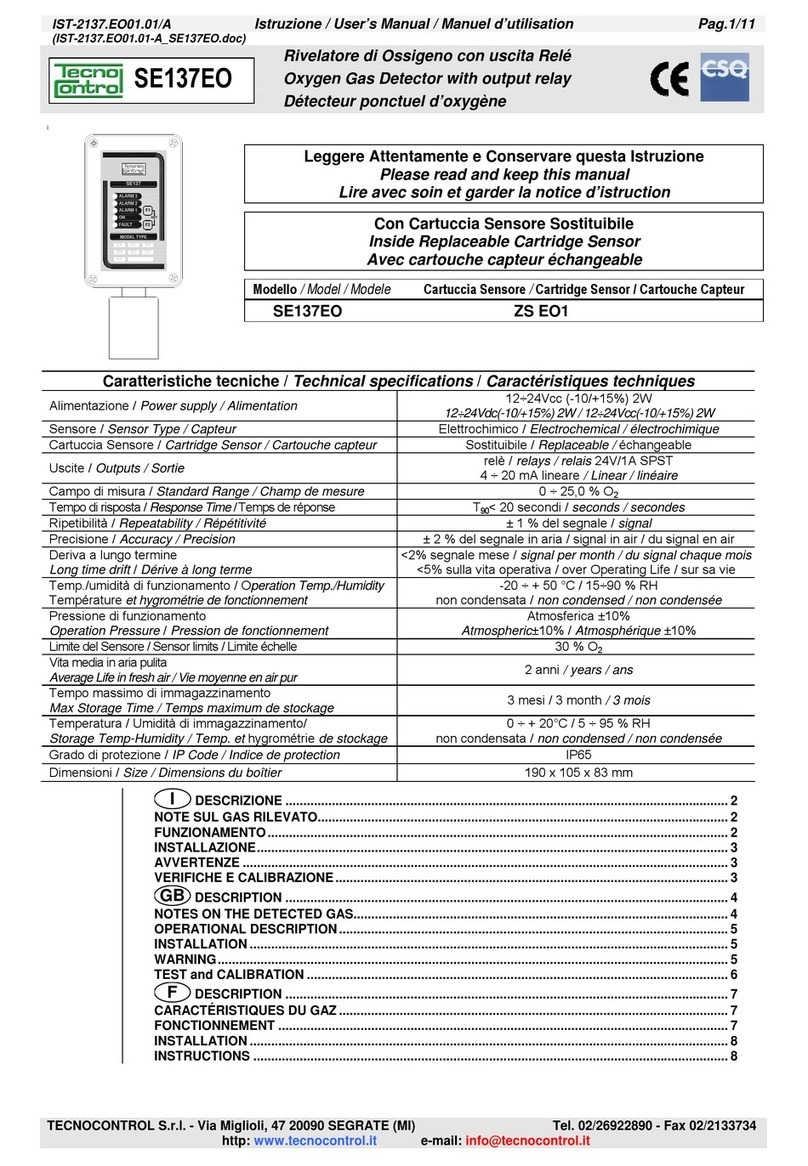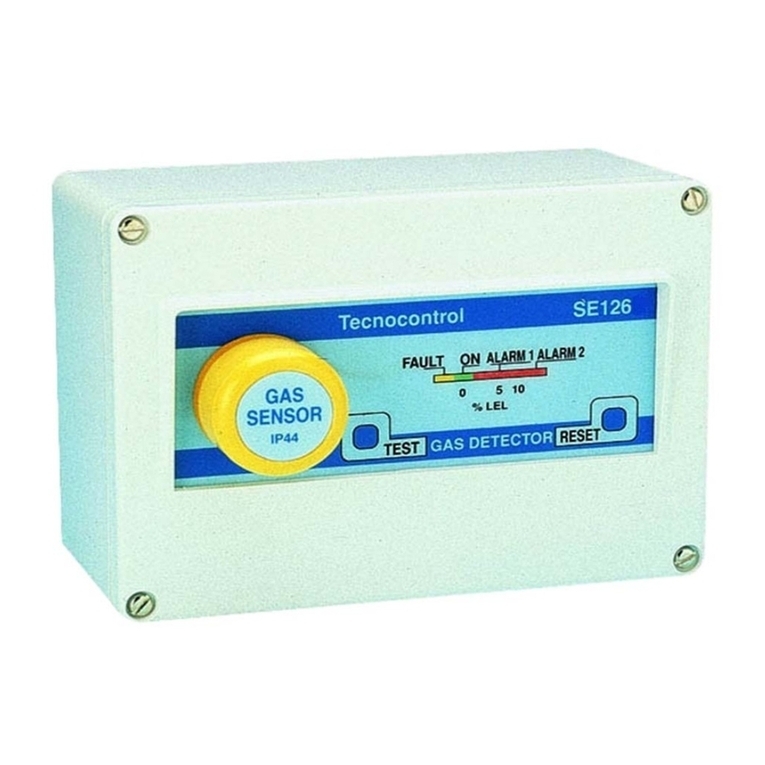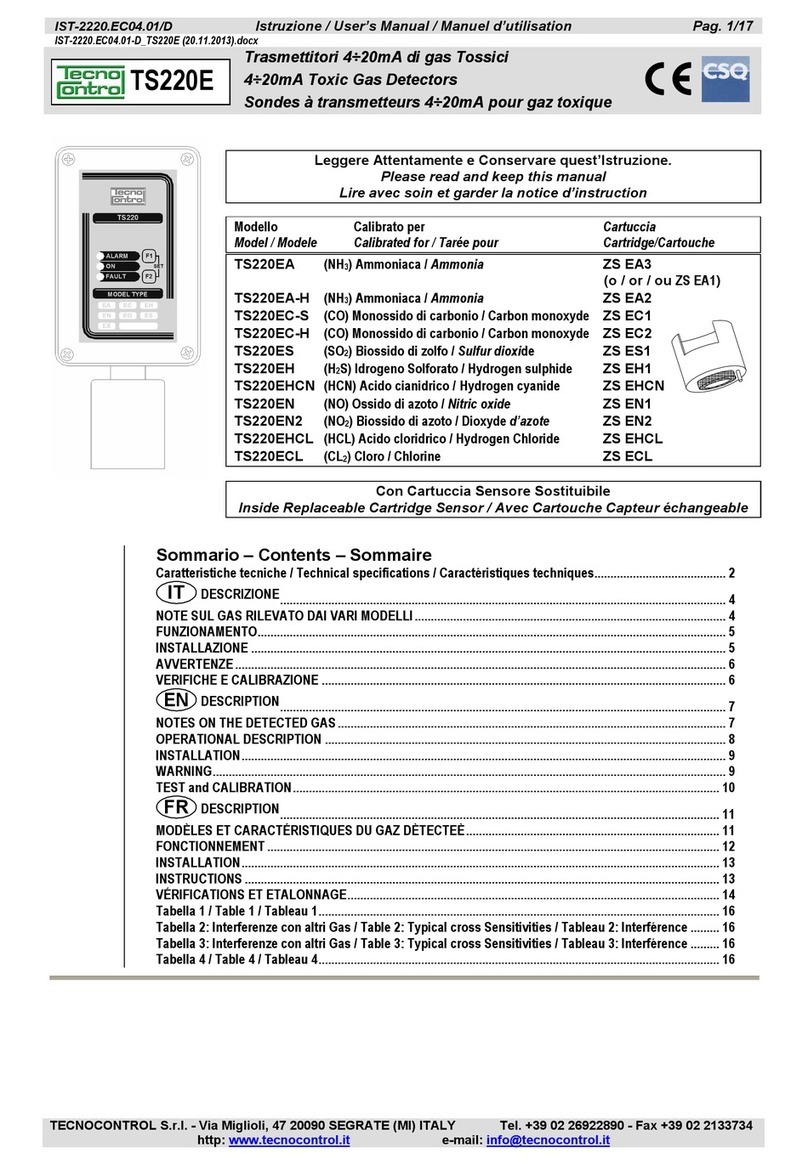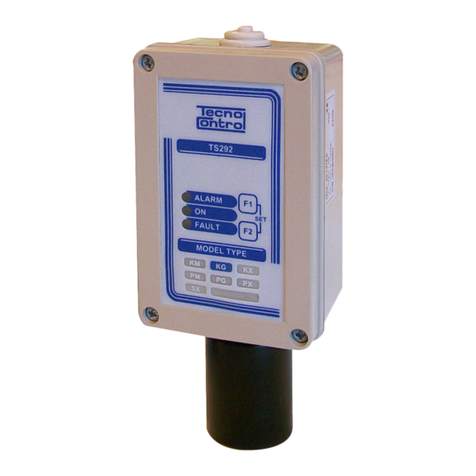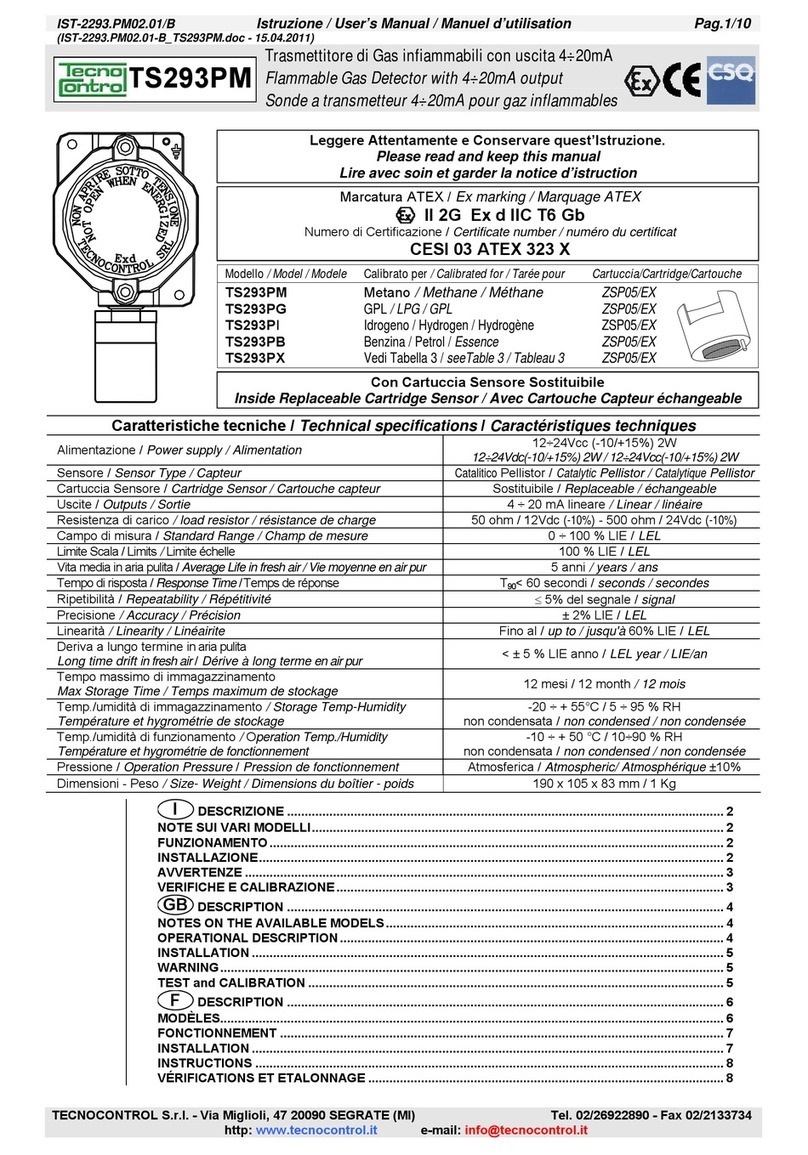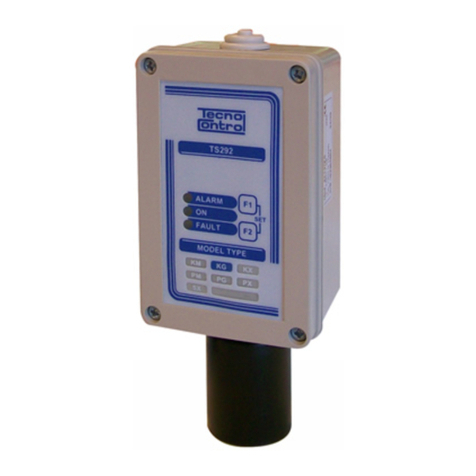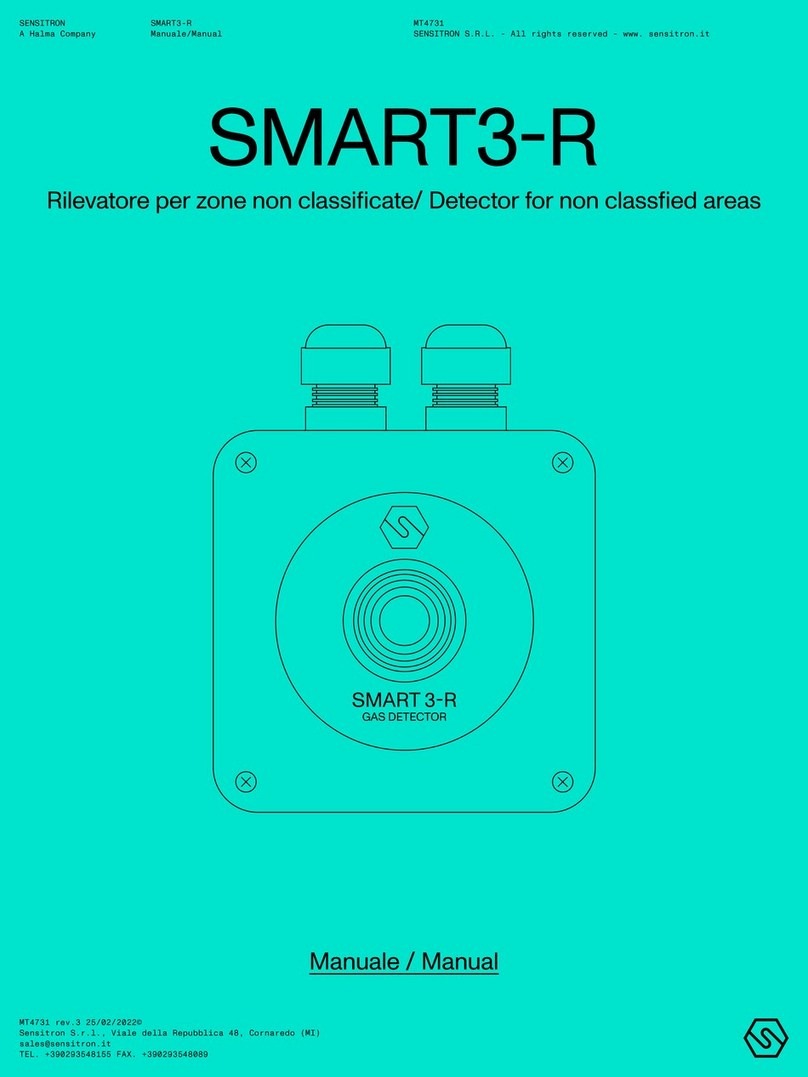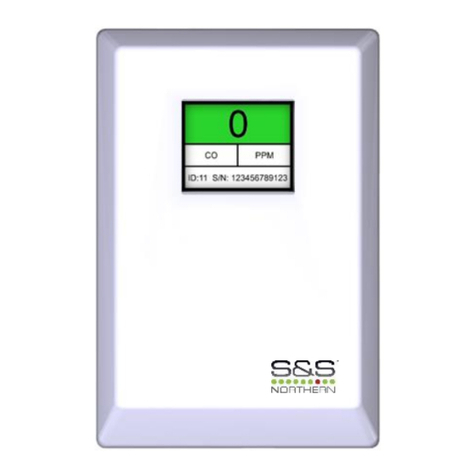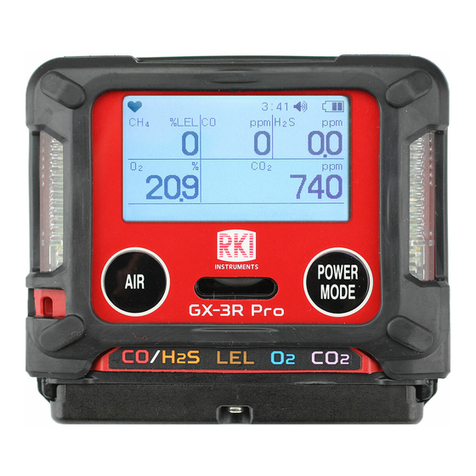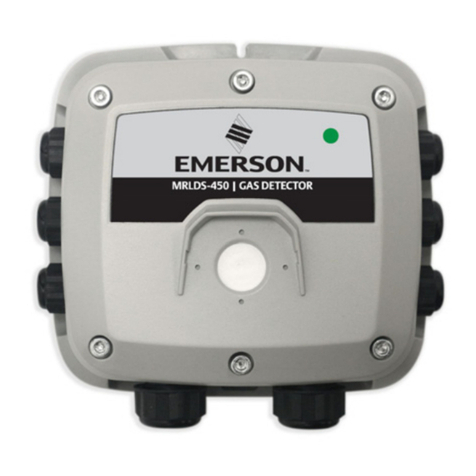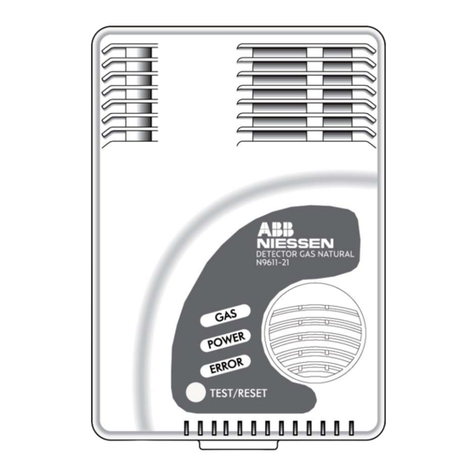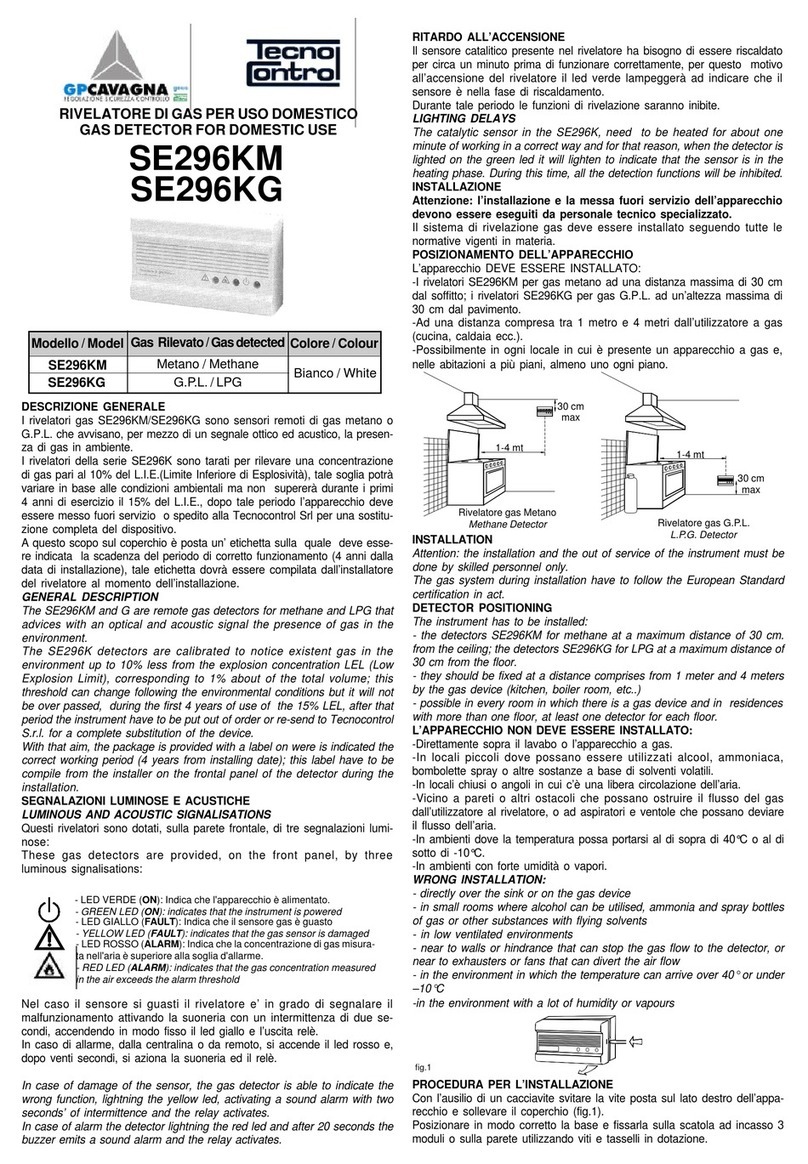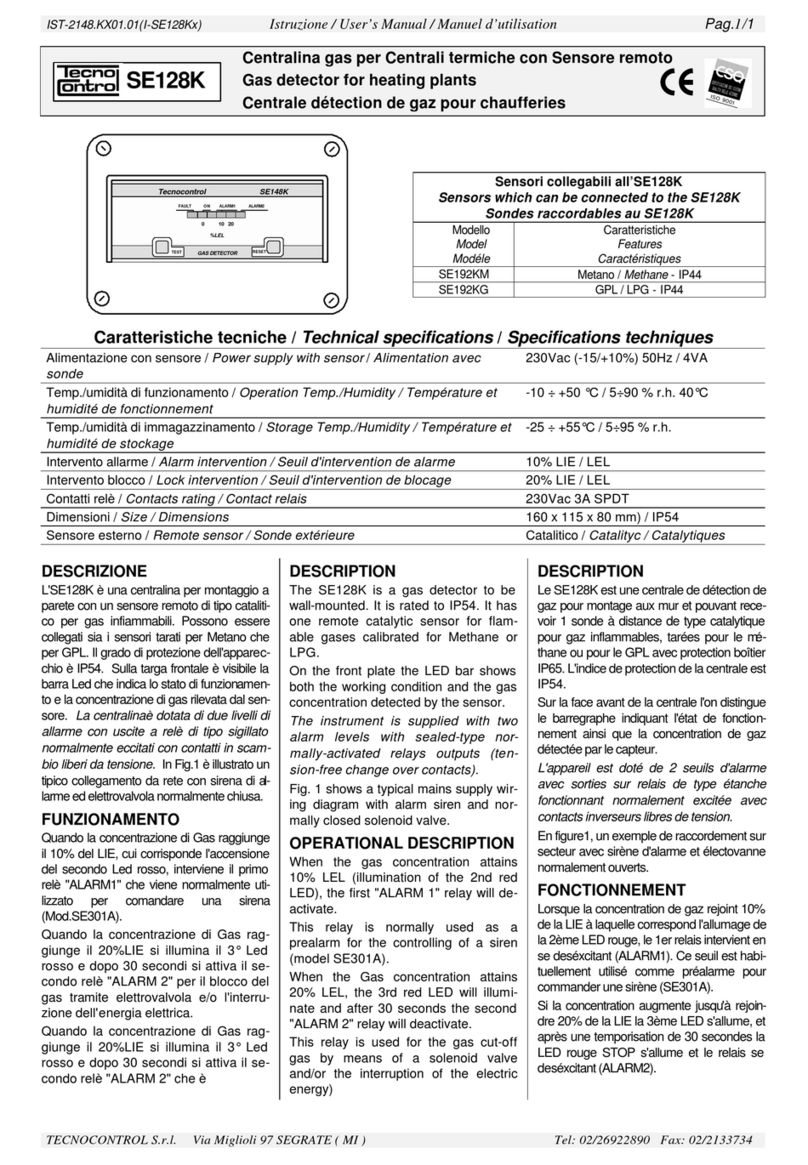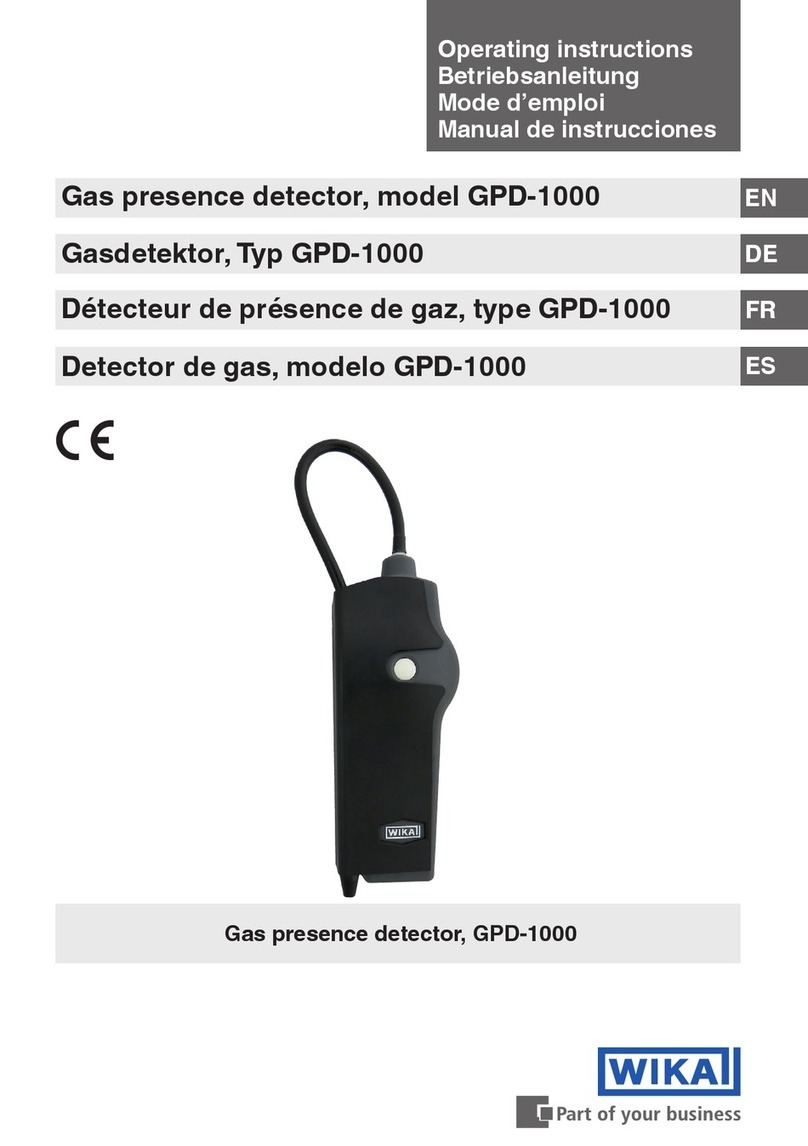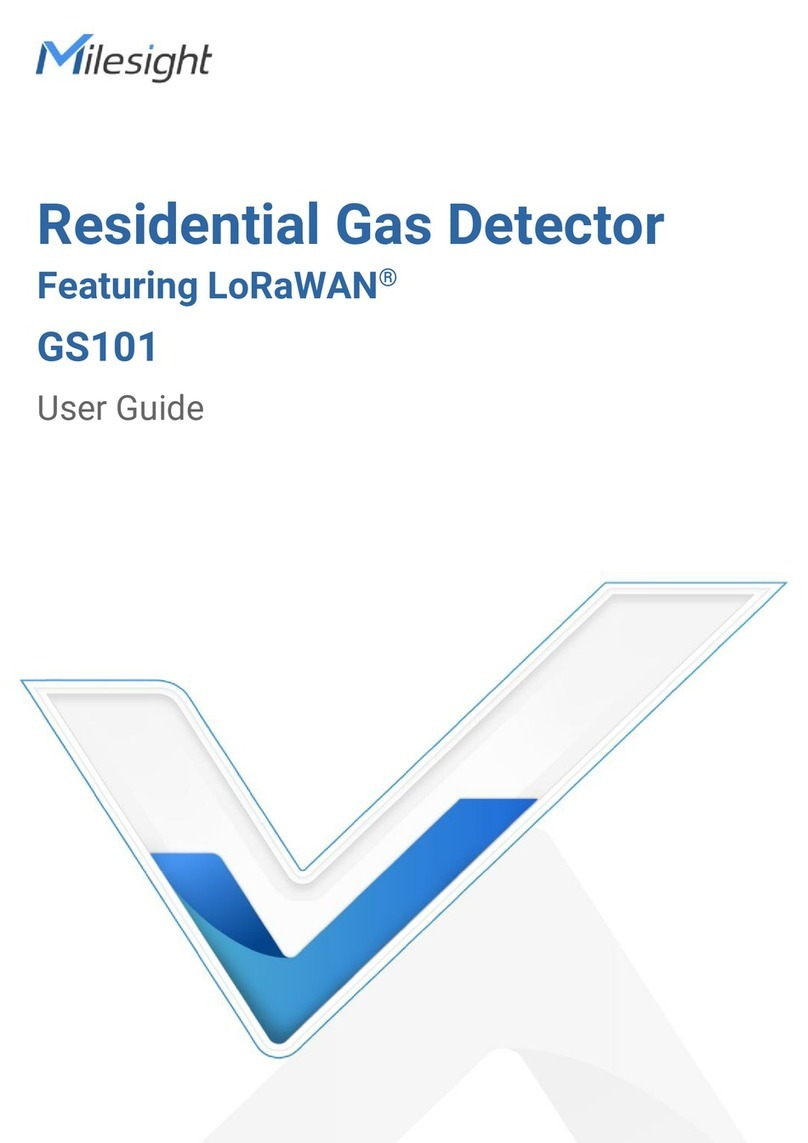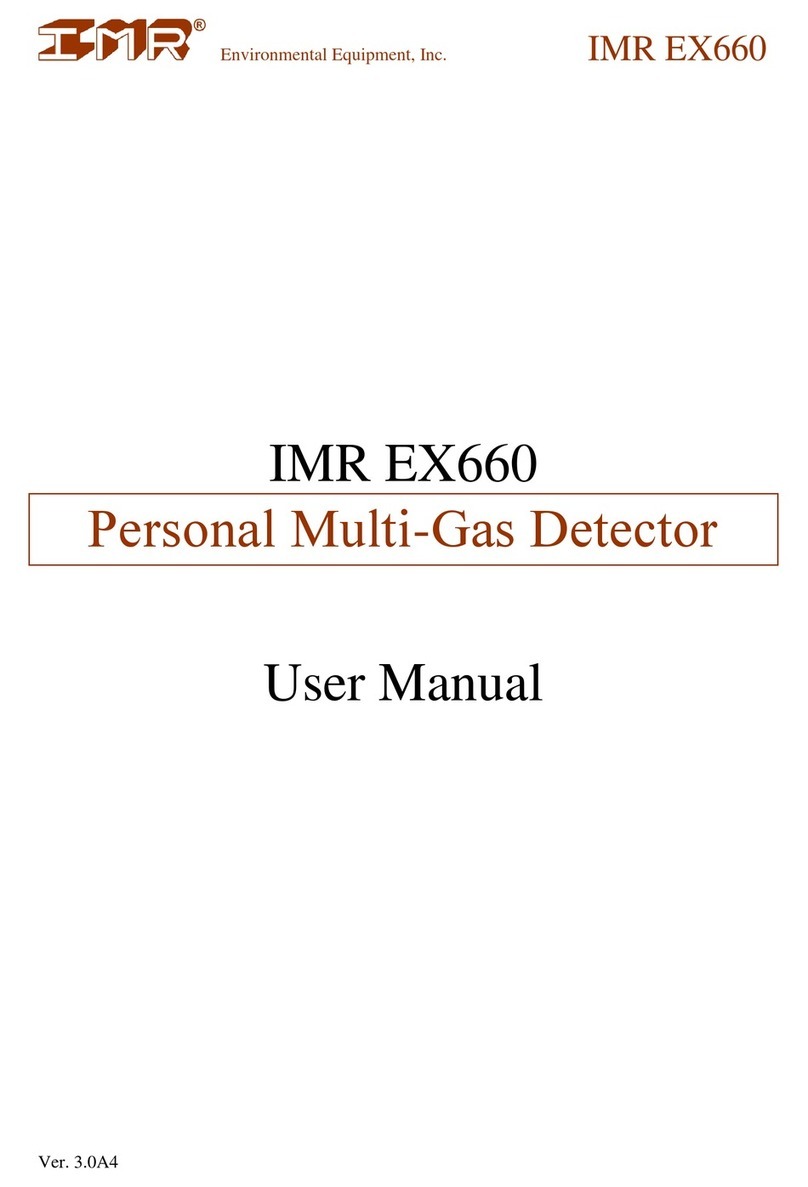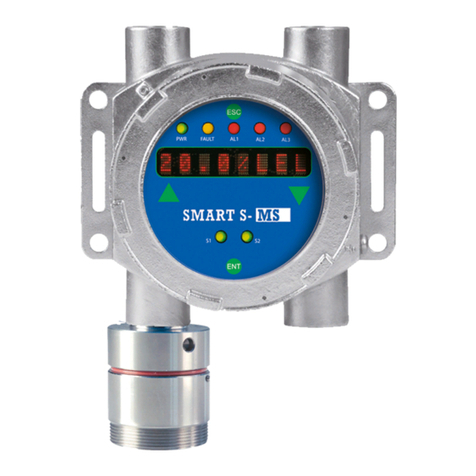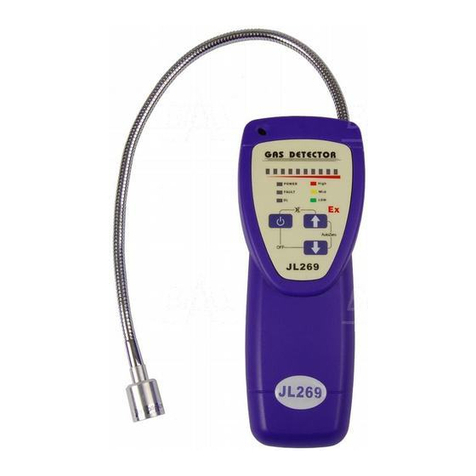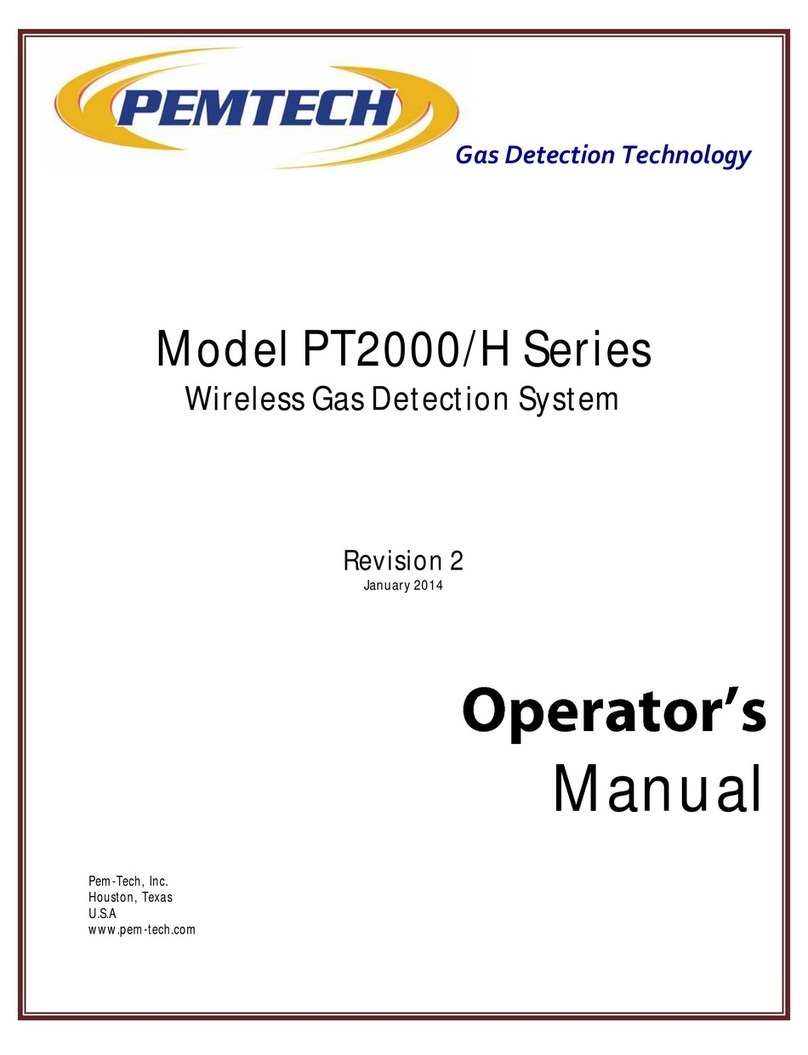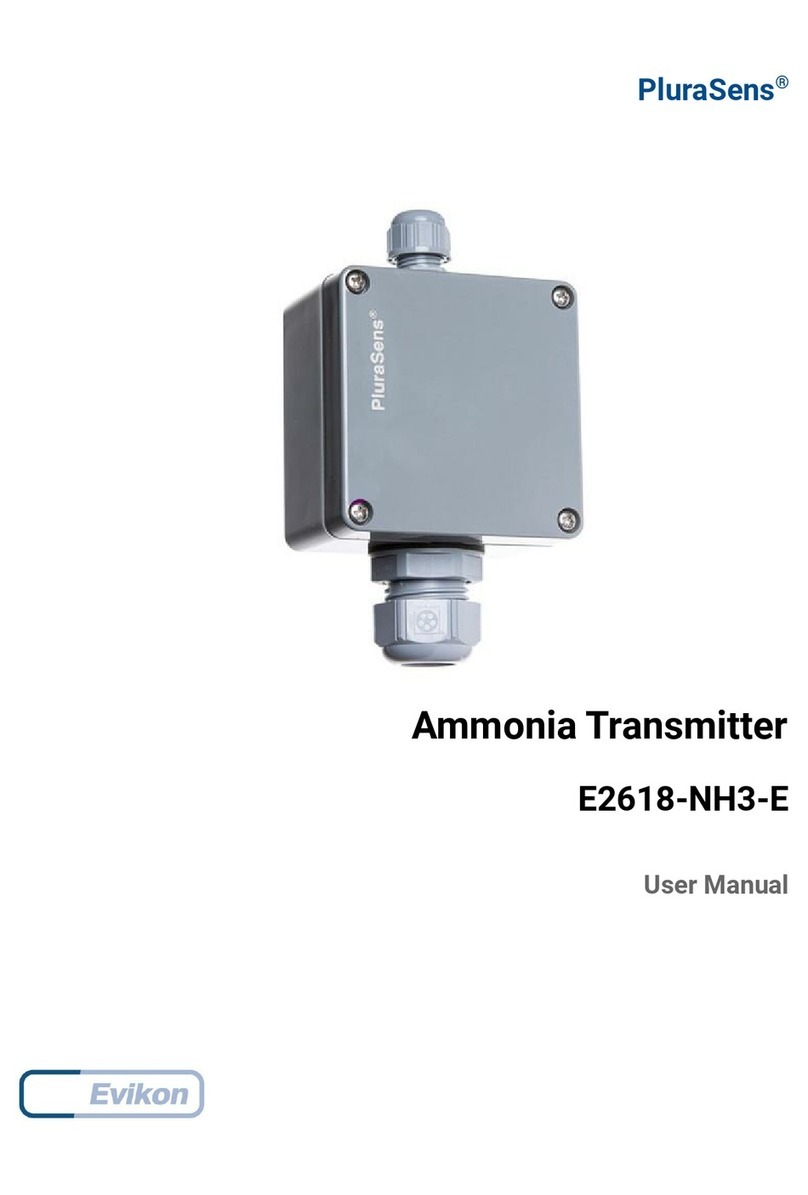
SE330KM Methane Neg.
SE330KG L.P.G.Neg.
SE333KM Methane Pos.
SE333KG L.P.G.Pos.
INSTALLATION INSTRUCTIONS
Use a screwdriver to undo the screw on the right-hand side of the
instrument and lift the cover (Fig 1).
Position the base correctly and fasten it on the built-in 3-module box or on
the wall, using the screws and dowels provided.
GENERAL DESCRIPTION
The Beta SE330K and SE333K gas detectors are methane or LPG control
units with LEDs and a buzzer that warn of the presence of gas in the
room. They are designed to be operated either directly or in remote mode.
The Beta detectors are calibrated to detect gas at 10% of the LEL (Lower
Explosive Limit); this threshold can vary according to environmental
conditions but will not exceed 15% of the LEL within the first five years of
use. The Sensor module must be replaced at the end of these five years or
if the “FAULT” LED turns on.
There is a label on the cover that should state the expiry date (5 years
after the date of installation); this label must be compiled by the person
who installs the detector, at the time of installation.
LEDS AND BUZZER
There are three LEDs on the front of each detector:
- GREEN LED (ON): indicates the instrument is powered.
- YELLOW LED (FAULT) + BUZZER: Indicates the sensor is broken.
- YELLOW LED (FAULT) blinking only: indicates the CO sensor
needs to be replaced.
- RED LED (ALARM): indicates the concentration of gas in the
air is above the alarm threshold.
If the gas sensor is defective, the buzzer will make a noise at a rate of
every two seconds, turning on the yellow LED and relay output.
In the event of an alarm, the red LED turns on and the buzzer and relay are
activated twenty seconds later.
1-4m
30cm
max
L.P.G. gas
detector.
30cm
max
1-4m
Methane gas
detector
ELECTRICAL CONNECTION: POWER SUPPLY
Attention: undertrack cables are required to connect the instrument to the
mains.
The gas detector must be powered at 230 Vac using terminals 1 and 2, or
at 12Vdc using terminals 3 (+) and 4 (-). (Fig. 2).
A circuit breaker must be fitted that is able to disconnect the detector from
the power supply, with a contact distance of at least 3 mm, in accordance
with the European standard IEC EN 60335-1.
Fig.1
INSTALLING THE INSTRUMENT
The instrument MUST BE INSTALLED:
- In the case of Beta SE330KM and Beta SE333KM methane gas detectors,
series Beta model SE330K
series Beta model SE333K
GAS LEAK DETECTOR FOR DOMESTIC USE WITH
INTERCHANGEABLE SENSOR
GENERAL TERMS OF THE GUARANTEE
THIS CERTIFICATE IS THE ONLYDOCUMENT THAT ENTITLES
YOU TO REPAIR OF THE PRODUCT UNDER THE TERMS OF
THE GUARANTEE.
- The product is GUARANTEED for a period of 24 months from the date
of purchase.
- The GUARANTEE does not cover damage caused by tampering,
incorrect or improper use and installation.
- The GUARANTEE is valid only if it is duly compiled.
- In the event of defects covered by the GUARANTEE, the manufacturer
will repair or substitute the product free of charge.
SERVICINGAFTERTHE GUARANTEE PERIOD:
Any repairs after the period of the GUARANTEE will be charged on the
basis of the parts substituted and the cost of labour.
Model Detected gas Logic Power supply
230Vac 50Hz /
12Vdc
12Vdc
230Vac + -
1 2 4
3
Fig.2
at a maximum distance of 30 cm from the ceiling; in the case of Beta
SE330KG and Beta SE333KG LPG gas detectors, at a maximum height of
30 cm above the floor.
- At a distance of between 1 and 4 metres from the gas appliance (cooker,
boiler, etc.). If possible, in every room where there is a gas appliance and,
in the case of multi-storey buildings, at least one on each floor.
CHARACTERISTICS OF THE OUTPUT SIGNAL
The Beta SE330K and SE333K control units have an output relay with
voltage-free contacts; the rating of the contacts is 8A 250Vac/30Vdc.
Sensor module
ZSDM1 METHANE SE330KM/SE333KM
ZSDG1
L.P.G.SE330KG/SE333KG
Detected gas
Code Beta
LIGHTING DELAYS
After the detector is turned on, the catalytic sensor in the detector takes
about a minute to warm up, during which time the green LED blinks to
indicate the alarm is disabled.
INSTALLATION
Attention: the instrument must be installed and put out of service by a
specialized technician.
Your gas supply and any shut-off devices must be installed in conformity
with the domestic laws in force.
The instrument MUST NOT BE INSTALLED:
- Directly above the sink or gas appliance.
- In small rooms where alcohol, ammonia, spray cylinders or other
substances based on volatile solvents might be used.
- In closed environments or corners where there is no free circulation of
air.
- Near walls or other obstacles that could prevent the flow of gas from the
appliance to the detector, or extractors and fans that could divert the flow
of air.
- In environments where the temperature could exceed 40°C or fall below
– 5°C.




